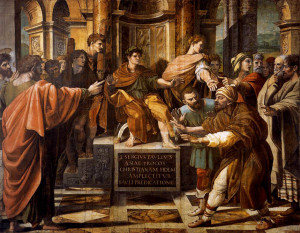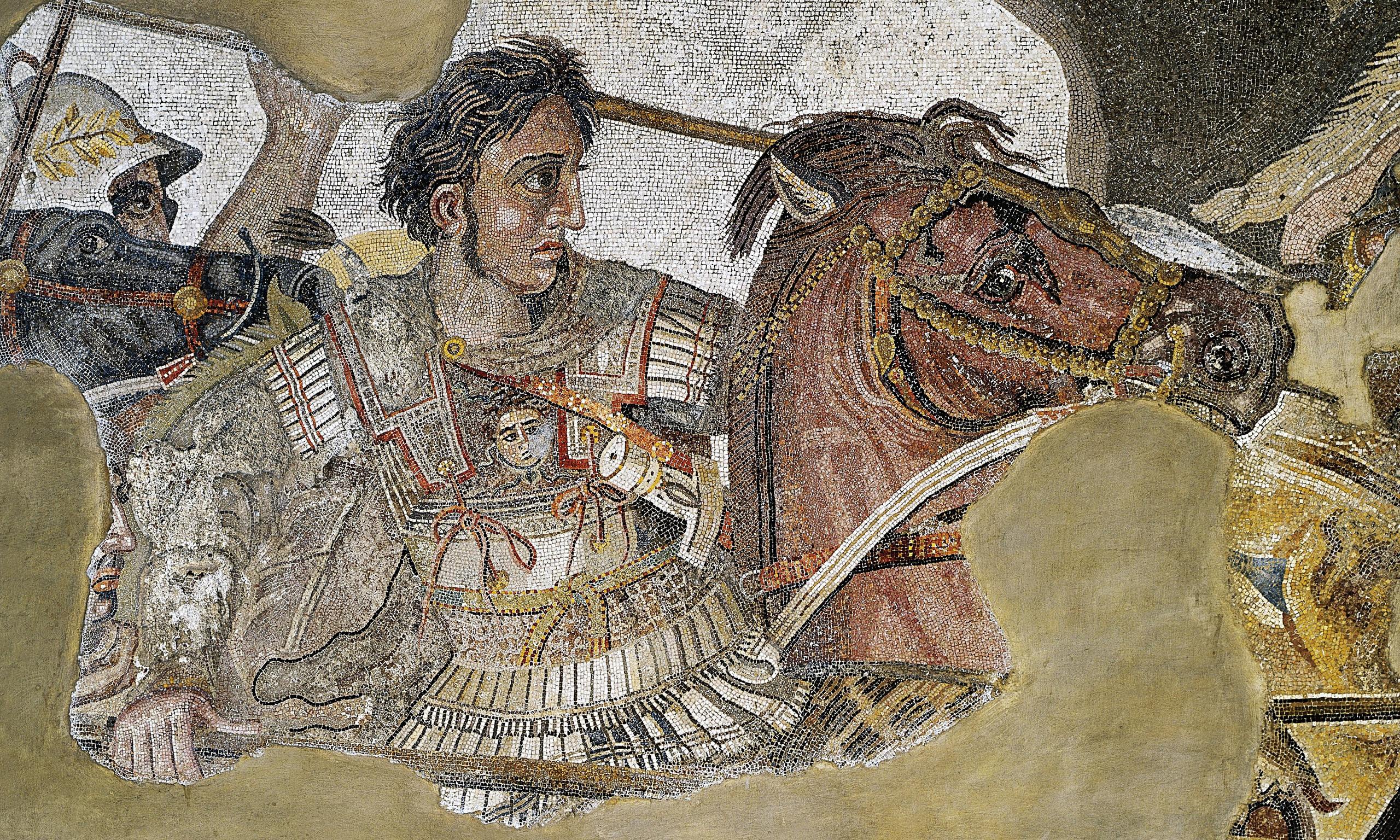What is mysticism? Simply put, mysticism is the practice or pursuit of a path to the spirit. The term “Mystery” derives from the Greek word “mysterion” (plural mysteria μυστήρια) which means the practice of an experience of a reality surpassing normal human understanding, a spiritual reality perceived as essential to the nature of life. It is implied that the knowledge of a mystery was secret.
What happened in a Mystery Center? One initiated into an ancient Mystery School had to pledge, on their life, never to reveal outside the Mystery Center its rituals or its secrets. An individual who taught at a Mystery School was a mystes, “one who has been initiated”. Each Mystery Center contained a school in which selected students studied and practiced meditation. Eventually a student would be deemed ready for initiation. This happened within the Holy of the Holies, deep within the local religion’s temple. The high priest or hierophant placed the prepared student into a near-death like state. To any uninitiated observer, the student was dead. For three and a third days, the student’s body lay as dead within the Holy of the Holies. Now free of the physical body, the student could experience and explore the spiritual world with the guidance of the hierophant. After the three days, the hierophant would call the student back to his body. The experience was so profound, the newly initiated mystic could no longer go by his or her old name. They had become born again, a new person. For them, their old self had died. Typically their new name came from their experience in the spiritual world. We find this taking on a new name after initiation occurring in all cultures everywhere in the ancient world. Remnants of this continue into our times when, for example, a cardinal is promoted to become the new pope.
When did mysticism arise? No one can adequately answer this question with historical documents because there was only an oral tradition for many centuries. Plato spoke of a time long ago where the center of culture was in Atlantis. Here it may be where the mysteries arose.
A water catastrophe is said to have brought an end to the Atlantean Age – perhaps this is recorded in the Bible as the Flood. Noah and his seven sons rode out the flood in an ark. When their ark landed, the world had greatly changed – the first rainbow was experienced. Rudolf Steiner, through his reading of the Akashic Record (Book of Life in the Bible), has shown that Noah and his sons came to live and restart civilization in India where they were known as Manu and the seven Holy Rishiis. The Atlantean mystery wisdom went with them. Since that time, one stream of civilization has steadily marched westward through Persia, Babylonia, Egypt, Greece, Rome, Europe to America perhaps in search of Atlantis. Each wave of civilization achieved something for the advancement of humanity. It is said the mysteries helped prepare humanity for each cultural wave.
While a Mystery existed within a local religion, an individual could be initiated into several mysteries at the same time. While each local religion had public rituals in which participation was expected (perhaps mandatory) of every member of society, an initiate could wander the world to experience mystery initiation into other mysteries.
When did mysticism die out? All teachings were by word-of-mouth. Nothing was written down until Aristotle sent Alexander out to establish Alexandrias (new cities with large learning libraries) throughout the known world in the 4th century BCE. Aristotle knew that the ancient mysteries were fading away. They could no longer fulfill their mission because crossing the threshold to the spiritual world became increasingly difficult. Taking the place of the mysteries was the evolving intellectual capability of each person. In ancient times, one experienced the gods active in Nature. One might experience the Muse inspiring their poetry or an arch-angel streaming thoughts into their head. Now, the spiritual world had withdrawn so far that initiations within the mystery centers were no longer successful. The level of higher consciousness that could be attained was falling. When the Mysteries faded away during the 4th century, the most popular ones were the Greek Mysteries. So we know these best. The Greek mystery schools include the Eleusinian, the Dionysian, the Orphic Mysteries, and many others. In addition, other mysteries in other geographies persisted up until the time of Christ including the Egyptian Isis, Persian Mithraic, Thracian/Phrygian Sabazius, and Phrygian Cybele.
Does mysticism relate to Christianity? When Christianity arrived, the Mystery Centers were still prevalent, beloved, but fading away. Early Christians believed that Christ was a God who entered at baptism into the body of Jesus and therein remained for three years. The Mystery of Christ is that a God became a human, thereby giving humanity a path forward. A path not back to the divine, but forward to become divine.
Early Christians believed that Christ-Jesus was the fulfillment of the ancient mysteries. They felt that now, the ancient mysteries could indeed fade away as the new mysteries, exemplified by the initiation of Saul on the road to Damascus (note, Saul changes his name to Paul after his initiation) had begun. Aspects of a local religion carried out by its respected high priests, for example presiding over sacrifices, ritual meals, ritual purifications, and initiations in secrecy, became totally changed by Christianity. This lead to the early persecution of Christians because the Roman establishment saw Christianity as subversive to its prevailing traditions and to its respected mysteries. When Christianity successfully took root in a locale, it typically was because their initiates went to the local mystery center and discussed with its initiates how their expectations, the fulfillment of their mysteries had been accomplished in Christ-Jesus.
Early Christian writings indicate that practices from the ancient mystery centers continued within the new faith such as the path towards initiation. There is a letter from Clement of Alexandria found in 1973 by Prof. Morton Smith of Columbia University called Secret Mark. It describes how Mark the Evangelist knew of the common gospel plus a gospel for initiates, “Mark, then, during Peter’s stay in Rome, he wrote of the Lord’s doings, not, however, declaring all [of them], nor yet hinting at the secret [ones], but selecting those he thought most useful for increasing the faith of those who were being instructed. But when Peter died as a martyr, Mark came over to Alexandria, bringing both his own notes and those of Peter, from which he transferred to his former book the things suitable to whatever makes for progress toward knowledge [gnosis]. He composed a more spiritual Gospel for the use of those who were being perfected. Nevertheless, he yet did not divulge the things not to be uttered, nor did he write down the hierophantic teaching of the Lord, but to the stories already written he added yet others and moreover, brought in certain sayings of which he knew the interpretation would, as a mystagogue, lead the hearers into the innermost sanctuary of that truth hidden by seven [veils]. Thus, in sum, he prearranged matters, neither grudgingly nor incautiously, in my opinion, and, dying, left his composition to the church of Alexandria, where it even yet is most carefully guarded, being read only to those who are being initiated into the great mysteries.”
With twelve apostles (eleven disciples plus Paul), early Christianity had (at least) twelve personalities. As the apostles journeyed out into the world, their brand of Christianity took root in different locations. As Christianity was accepted at a given locale and by its mystery center, it took on the characteristics of the local mystery traditions. Out of these traditions arose great second and third generation Christians. Arius developed a huge following that included the Germanic tribes (the German name “ICH” – “I” in English – was created for them by the Initiate Ulfinas who used the letters Jesus-Christ to form this new German word!). Nestorius brought Christianity eastward all the way to China with missionaries as far as Japan. When Constantine, whose mother was already a Christian, allowed for Christianity to become the state religion, he wanted all these different feuding Christian sects to agree on one Christianity. This noble goal for religious peace through a universal, a Catholic, Christianity resulted in the Nicene Creed. What Constantine did not expect is that later enforcement of this creed resulted in the persecution, torture, and death of millions of mystery-loving Christians by Christians.
Are the Mysteries dead? Nothing with spirit really dies. After Constantine, and after his son, arose Julian as Emperor. Julian had been raised as an Arian Christian but he had witnessed Christians killing his own family for power. In 337 AD when Constantine died, Julian’s cousin, Constantius II, in order to consolidate his position as emperor, massacred most of Julian’s close relatives leaving only Constantius and his brothers Constantine II and Constans I, and their cousins, Julian and Gallus (Julian’s half-brother), as the surviving males related to Emperor Constantine. Julian received an excellent education learning theurgy and Neo-Platonism from Maximus of Ephesus. Ephesus is where the Temple of Artemis was burned in 356 BC (same day as Alexander’s birth) by Herostratus who sought fame. Ephesus is also where St. Paul lived and was imprisoned from 52–54 AD and where John the Evangelist lived and wrote circa 90-100 AD. In 354, Julian wrote a treatise Against the Galileans where he states, Christians were fanatics and cheerfully massacred heretics. By contrast the Greeks were mild and forbearing; they were superior in wisdom and intelligence. Christianity has achieved little or nothing in the fields of science, astronomy, arithmetic and music. The achievements of Plato, Socrates, Aristides, Thales, Lycurgus, Agesilaus and Archedemus, the Sibyls, the Delphic Oracle and the pagan Mysteries surpassed anything that Christianity has to offer.
“On 4 February 362, Julian promulgated an edict to guarantee freedom of religion. This edict proclaimed that all the religions were equal before the law, and that the Roman Empire had to return to its original religious eclecticism, according to which the Roman state did not impose any religion on its provinces.
“In his Tolerance Edict of 362, Julian decreed the reopening of pagan temples, the restitution of confiscated temple properties, and the return from exile of dissident Christian bishops. During Julian’s brief reign from 361-363 CE, his popularity among the people and the army indicated that he might have brought paganism back to the fore of Roman public and private life [keep this point in mind].
On 26 June 363, at the indecisive Battle of Samarra in Persia, Julian was stabbed by a spear. In 364, Libanius stated that Julian was assassinated by a Christian who was one of his own soldiers.” Rudolf Steiner states that “Julian was brought face to face with the deeper implications of the problem of evil and the relation of Christ Jesus to this problem. He hoped to find an answer through initiation into the Persian Mysteries [Mithraic and Zarathustrian] and to return to Europe with the solution. But unfortunately he fell by an assassin’s hand during the Persian campaign. It can be proved historically that this was the work of an adherent of Constantine. … In the following years the Augustinian principle [of blind faith in the Authority of the Church] triumphed – ideas that in any way echoed Manichaeism [a Christian sect founded by Mani] were forbidden, i.e. the inclusion of material ideas into spiritual thinking. The West therefore was driving to an abstract mode of thinking and in the course of time this mode of thinking permeated the whole of Western Europe.
“Julian therefore was engaged in a titanic struggle. He finally attempted, by reviving Manichaeism, to bring about continuity in the evolution of the pagan Mysteries. … That he was doomed to fail was a necessity of the time. And we shall not understand the reason for his failure if we belittle his great achievements, if we fail to see him as a titanic figure, fighting for a realistic understanding of the relations between man and the universe. And it is of paramount importance today to recall these great moments in the historical evolution of the West. For we are living in an age from which we shall not emerge with a healthy outlook unless we make a fresh assessment of the aims of Julian the Apostate. It was not possible in his time – herein lies his great tragedy – to reconcile the old principle of initiation with the real essence of Christianity. Today this has become possible and we must not fail to translate the possibility into reality if the world and mankind are not to suffer evolutionary decline. People must realize the need for regeneration in all spheres of life and above all the crying need to restore communication with the spiritual world.” [i]
A few years following Julian came Emperor Theodosius from 379 to 395 who set to work to totally destroy the remaining mystery centers and all pagan learning centers within Roman rule believing that the old mysteries worked against Christianity. From this time through Emperor Justinian ‘s reign 527 to 565, soldiers and mobs destroyed books, centers, shrines, and the “pagan” people associated. To survive, the Mysteries went underground only to surface from time to time in non-violent Christian groups such as the Bogomils, the Cathars, and the Knights Templar.
 The Mysteries Today. In 1979, the Ayatollah Khomeini called America the Great Satan. Perhaps in his spiritual insights he could see America’s destiny with the Prince of Darkness. America was founded as a Holy Experiment largely by Freemasons but also by other mystical groups. Here, with peoples from all over the world, a land was prepared for the future incarnation of the Prince of Darkness, called Ahriman in Persian lore. One can bemoan such a burden, but it is with great wisdom that such a place could be so prepared that it would be capable of confronting such a powerful spiritual being. America is deemed worthy to take on such a difficult task for she is wrest something from this being that will be important for the further development of Mankind. The new mysteries are working towards such a noble goal.
The Mysteries Today. In 1979, the Ayatollah Khomeini called America the Great Satan. Perhaps in his spiritual insights he could see America’s destiny with the Prince of Darkness. America was founded as a Holy Experiment largely by Freemasons but also by other mystical groups. Here, with peoples from all over the world, a land was prepared for the future incarnation of the Prince of Darkness, called Ahriman in Persian lore. One can bemoan such a burden, but it is with great wisdom that such a place could be so prepared that it would be capable of confronting such a powerful spiritual being. America is deemed worthy to take on such a difficult task for she is wrest something from this being that will be important for the further development of Mankind. The new mysteries are working towards such a noble goal.
Conclusion. The Mysteries, as we saw, were fading at the time of Alexander. 666 years later, under severe persecution, they went underground . They spring up from century to century in various groups who try to demonstrate the true life of a Christian. Such groups sacrifice themselves for the future. The Cathars were brutally extinguished but their treasure survived, the child who would become Christian Rosenkruetz, founder of the Rosicrucians. These all point back to the greatest mystery of all, namely the Mystery of Golgotha when a God experienced Death and thus fully became Human, thereby changing forever our world. How can Man find the Christ today? This is the mystery of our times.
Additional Material. Augustine (345–410 AD) was a Manichaean for ten years but he lost faith with Manichaeism when Faustus, a leader of the sect, failed to resolve his doubts. Abandoning Manichaeism (see Confessions, Books IV and V), Augustine went to Rome where St. Ambrose, in 386, opened his eyes to the authority of the Church. Augustine then directed his literary work against the Manichaeans. For him, the lineage of the Church gave it authority to know the Scriptures from whence one’s faith originated. His dictum, “Better a man’s body be destroyed than his soul” leads to Crusades and Inquisitions. Augustine is credited as founder of Western monasticism.
[i] Building Stones for an Understanding of the Mystery of Golgotha, lecture 7, 19Apr1917, GA 175
